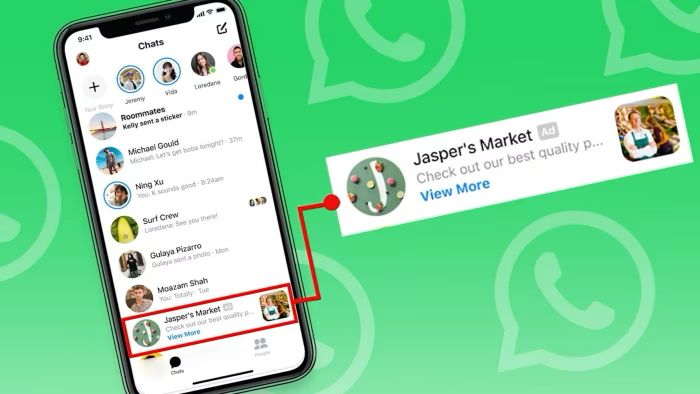Meta has officially confirmed what many long suspected – ads are coming to WhatsApp. For an app that once proudly stood by its “no ads, no games, no gimmicks” mantra, this shift feels like the end of an era.
Users across the world are expressing concern, as WhatsApp has been one of the last major safe havens from the barrage of online advertising. Its clean, distraction-free interface made it a go-to for personal and professional communication alike—untouched by pop-ups, autoplay promos, or sponsored content.
The mere idea of having ads pop up in between our most personal conversations feels invasive to some—almost like someone eavesdropping just to sell you a product. After all, WhatsApp wasn’t just another app; it was the app—the one place you could escape the digital noise and just talk.
But let’s face it, the writing has been on the wall for a while. Ever since Meta (formerly Facebook) acquired WhatsApp back in 2014 for a staggering $19 billion, monetization seemed inevitable. Meta didn’t pay billions just to let WhatsApp exist as a philanthropic tool for global messaging. And if you’ve used Instagram or Facebook recently, you know how swiftly Meta transforms clean platforms into ad-powered ecosystems.
WhatsApp has taken its time, but now it’s making its move—and it’s starting slow. For now, the company says the ads will appear in the “Status” section (WhatsApp’s version of Stories, similar to Instagram or Snapchat), and not within actual chats.
Think of how YouTube began: first came the short skippable ads, then the five-second unskippables, and now full-blown two-minute product reels before a video even starts. Slowly but surely, the platform trained its users to accept ads as normal—even expected.
And perhaps that’s what’s coming to WhatsApp too. It may start with subtle placements in Status, then maybe within Channels, and eventually, we might see sponsored messages or chatbot recommendations sliding into your inbox like a well-placed YouTube mid-roll ad.
But is that entirely a bad thing?
In fairness, YouTube’s ad revenue allowed creators to thrive, content to grow, and innovation to flourish. If WhatsApp ads are done right—respectfully, with control given to the user—it could help fund features we’ve been asking for, improve server performance, or support businesses using the platform as their primary sales tool.
Maybe we’re heading toward a world where, much like on YouTube, users might have the option to pay for an ad-free WhatsApp experience—or embrace the free version with occasional ads.
Change is often met with resistance, especially when it affects something as personal as messaging. But sometimes, change also builds the bridge to a more evolved experience.
The challenge is whether Meta can walk that tightrope—without turning WhatsApp into just another billboard.




